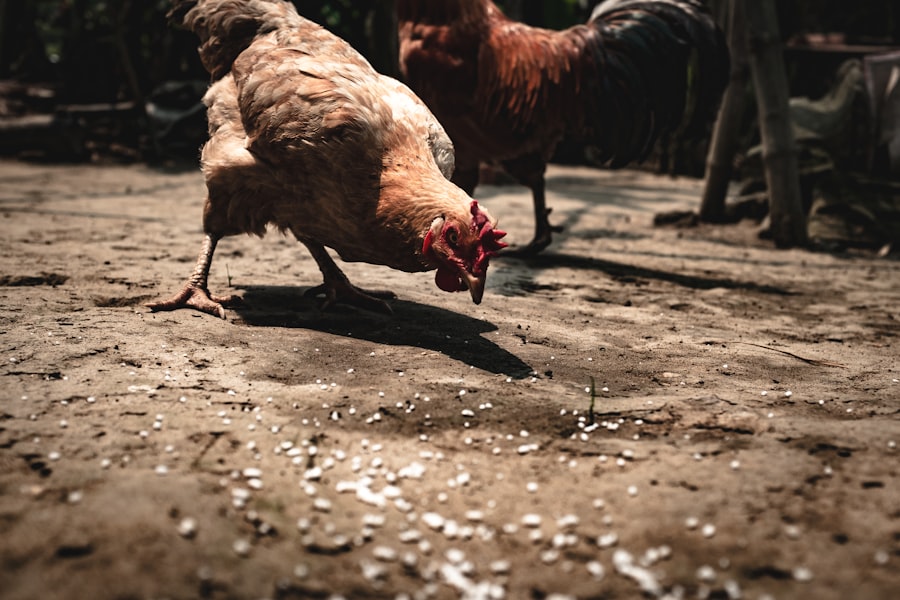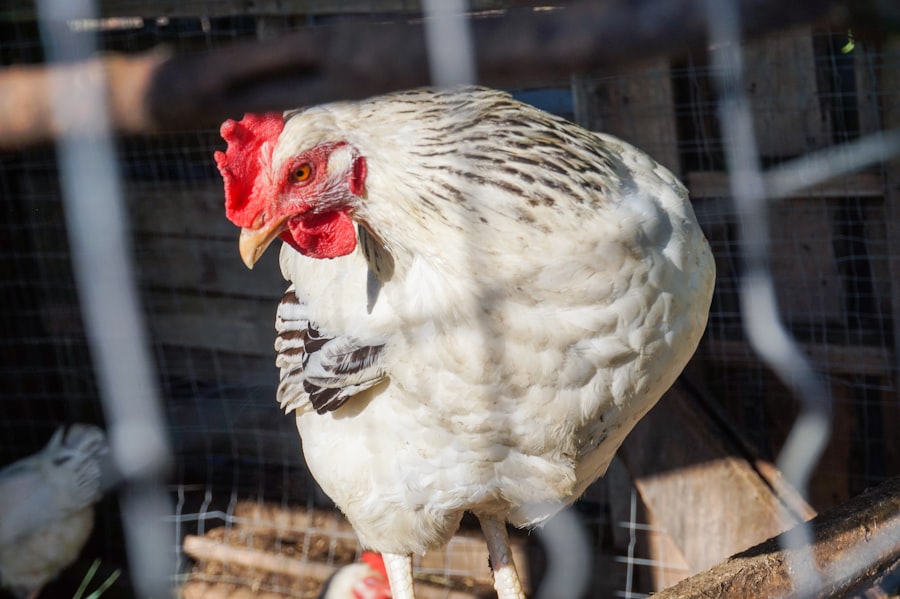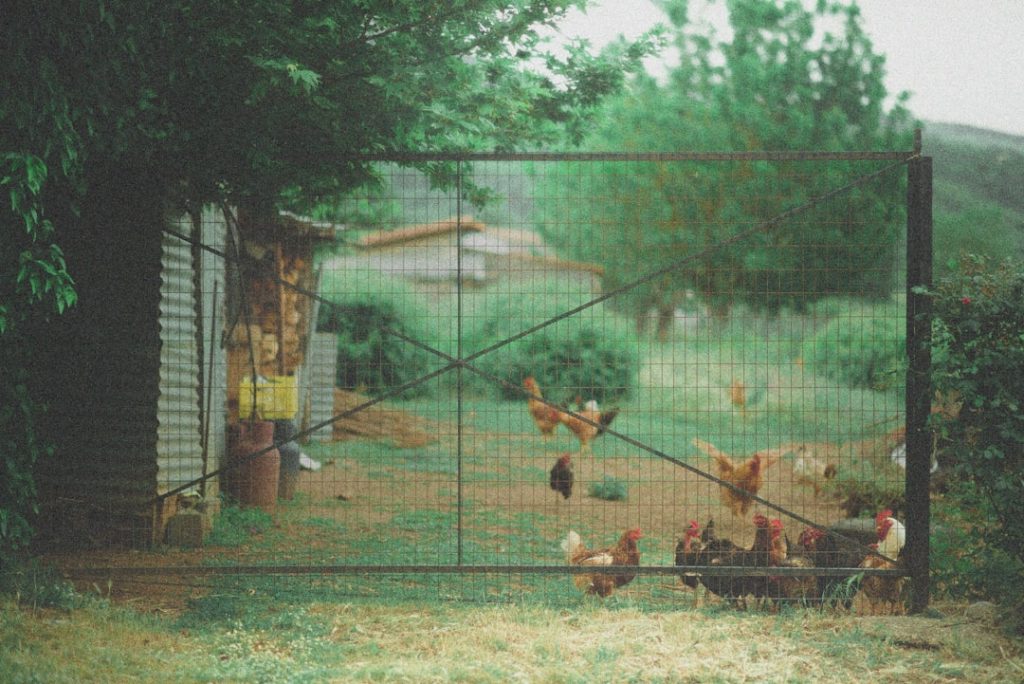Foxes are intelligent and adaptable predators that present a significant risk to chickens. These primarily nocturnal animals are most active at night when chickens are roosting and vulnerable. Foxes possess excellent hunting skills, including the ability to dig, climb, and jump, which allows them to access chicken coops.
Their keen sense of smell enables them to detect chickens from a distance, and once they identify a potential food source, they persistently attempt to gain access. Territorial behavior is a characteristic of foxes, who mark their territory with urine and feces. This can serve as a warning sign for chicken owners, indicating the presence of foxes in the area.
As opportunistic feeders, foxes will exploit any available food source, making it essential for chicken owners to be proactive in protecting their flocks. Foxes demonstrate high adaptability, thriving in both urban and rural environments. They are known to exploit human habitats for food, which makes chicken coops attractive targets.
Chicken owners must recognize the potential threat posed by foxes and implement effective security measures to protect their coops and flocks from these predators.
Table of Contents
- 1 Securing the coop: Building a fox-proof chicken enclosure
- 2 Using deterrents: Natural and humane methods to keep foxes away
- 3 Supervising free-range time: Monitoring chickens when they are out of the coop
- 4 Nighttime precautions: Protecting chickens during the hours when foxes are most active
- 5 Training guard animals: Using dogs or other animals to protect the flock
- 6 Being vigilant: Regular checks and maintenance to ensure the safety of chickens from foxes
- 7 FAQs
Key Takeaways
- Foxes are intelligent and adaptable predators that are known for their stealth and cunning behavior.
- Building a fox-proof chicken enclosure involves using sturdy materials, burying wire mesh, and securing all entry points.
- Natural deterrents such as strong-smelling plants, predator urine, and motion-activated sprinklers can help keep foxes away from the coop.
- Supervising free-range time for chickens is essential to ensure they are safe from fox attacks.
- Taking nighttime precautions such as locking up the coop securely and using motion-activated lights can help protect chickens from foxes.
Securing the coop: Building a fox-proof chicken enclosure
Securing the Coop Structure
The first step in securing the coop is to ensure that it is constructed with sturdy materials that can withstand the attempts of foxes to gain access. This includes using heavy-duty wire mesh to cover all openings, including windows and vents, to prevent foxes from entering the coop. Additionally, it is important to bury the wire mesh at least 12 inches deep around the perimeter of the coop to prevent foxes from digging underneath it.
Securing Doors and Openings
Another important aspect of securing the coop is to install secure latches and locks on all doors and openings to prevent foxes from prying them open. It is also crucial to regularly inspect the coop for any signs of wear and tear and repair any damage promptly to maintain its integrity.
Deterrents and Additional Measures
Furthermore, it is recommended to install motion-activated lights or alarms around the coop to deter foxes from approaching it during the night. In addition to securing the physical structure of the coop, it is important to implement measures to prevent foxes from gaining access to the chickens inside. This includes using predator-proof feeders and waterers that are designed to prevent foxes from reaching inside the coop. It is also advisable to keep the area around the coop clear of any potential hiding spots for foxes, such as tall grass or brush piles. By taking these proactive measures, chicken owners can create a secure and fox-proof environment for their flock.
Using deterrents: Natural and humane methods to keep foxes away

In addition to securing the coop, there are natural and humane methods that can be used as deterrents to keep foxes away from chicken coops. One effective deterrent is the use of strong-smelling substances, such as predator urine or ammonia-soaked rags, placed around the perimeter of the coop. The strong odor of these substances can deter foxes from approaching the coop, as they will perceive it as a potential threat to their territory.
Another natural deterrent is the use of plants with strong odors, such as lavender or mint, around the coop. These plants can help mask the scent of chickens and deter foxes from approaching the area. Additionally, installing motion-activated sprinklers or sound devices around the coop can startle and deter foxes from approaching it.
It is also important to keep the area around the coop clean and free of food sources that may attract foxes. This includes securing garbage cans and compost bins to prevent foxes from scavenging for food near the coop. By removing potential food sources, chicken owners can reduce the likelihood of attracting foxes to their property.
Furthermore, introducing natural predators of foxes, such as owls or hawks, into the area can help keep them at bay. These natural predators can help create a hostile environment for foxes, deterring them from approaching the coop. By using natural and humane deterrents, chicken owners can effectively keep foxes away from their flock without causing harm to these wild animals.
Supervising free-range time: Monitoring chickens when they are out of the coop
Allowing chickens to free-range outside of the coop can provide them with exercise and access to natural food sources, but it also exposes them to potential threats from foxes. It is important for chicken owners to supervise their flock during free-range time to ensure their safety. One way to do this is by using portable fencing or electric netting to create a secure area for chickens to roam while still being protected from predators.
It is also important to schedule free-range time during daylight hours when foxes are less active, reducing the risk of encountering them. Additionally, keeping a watchful eye on the flock while they are outside can help detect any signs of potential danger, allowing for immediate intervention if necessary. Another way to supervise free-range time is by using guard animals, such as dogs or geese, to protect the flock from potential threats.
These animals can help deter foxes from approaching the chickens and provide an added layer of security during free-range time. By supervising free-range time and implementing measures to protect chickens from potential threats, chicken owners can provide their flock with the opportunity to enjoy outdoor time while minimizing the risk of encountering foxes.
Nighttime precautions: Protecting chickens during the hours when foxes are most active
Nighttime is when foxes are most active, making it crucial for chicken owners to take precautions to protect their flock during these hours. One effective precaution is to ensure that all chickens are securely locked inside the coop before nightfall. This includes checking all doors and openings for any signs of damage or wear that could potentially allow foxes to gain access.
Installing automatic door closers on the coop can provide added security by ensuring that chickens are safely locked inside at night without requiring manual intervention. Additionally, using predator-proof latches and locks on all doors and openings can help prevent foxes from prying them open. It is also important to regularly inspect the perimeter of the coop for any signs of potential entry points for foxes, such as holes or gaps in the wire mesh.
By maintaining a secure perimeter, chicken owners can minimize the risk of foxes gaining access to their flock during the night. Furthermore, using motion-activated lights or alarms around the coop can startle and deter foxes from approaching it during the night. These measures can help create a hostile environment for foxes, reducing the likelihood of them attempting to gain access to the coop.
By taking these nighttime precautions, chicken owners can provide their flock with a secure environment during the hours when foxes are most active, minimizing the risk of encountering these predators.
Training guard animals: Using dogs or other animals to protect the flock

Effective Deterrents Against Foxes
Training guard animals, such as dogs or other animals, can provide an effective layer of protection for chicken coops against potential threats from foxes. Dogs are natural predators of foxes and can be trained to patrol the perimeter of the coop and deter them from approaching it. Additionally, their presence alone can act as a deterrent for foxes, as they will perceive it as a potential threat to their territory.
Selecting the Right Breed and Training
It is important to select a breed of dog that is known for its protective instincts and trainability, such as a livestock guardian breed or a terrier breed with a strong prey drive. Proper training is essential for ensuring that guard dogs understand their role in protecting the flock and can effectively deter potential threats.
Alternative Guard Animals
In addition to dogs, other animals such as geese or guinea fowl can also be trained to protect chickens from predators. These animals have natural instincts to alert and defend against potential threats, making them effective guard animals for chicken coops.
Being vigilant: Regular checks and maintenance to ensure the safety of chickens from foxes
Being vigilant and conducting regular checks and maintenance is essential for ensuring the safety of chickens from foxes. This includes inspecting the perimeter of the coop for any signs of potential entry points for foxes, such as holes or gaps in the wire mesh. Any damage or wear should be promptly repaired to maintain a secure environment for the flock.
Regularly checking all doors and openings for secure latches and locks is also important for preventing foxes from gaining access to the coop. It is essential to ensure that all doors are securely locked at night when foxes are most active. Additionally, monitoring the behavior of guard animals and ensuring that they are effectively patrolling the perimeter of the coop can help deter potential threats from foxes.
Regular training and reinforcement of their protective instincts is important for maintaining their effectiveness in protecting the flock. Furthermore, staying informed about local wildlife activity and any potential sightings of foxes in the area can help chicken owners remain vigilant and proactive in protecting their flock. By staying informed about potential threats, chicken owners can take preemptive measures to secure their coop and minimize the risk of encountering foxes.
By being vigilant and conducting regular checks and maintenance, chicken owners can ensure the safety of their flock from potential threats posed by foxes.
If you’re looking for tips on how to keep your chickens safe from foxes, you might want to check out this article on chicken coop designs in Grand Island, NE. It offers valuable insights on how to build a secure coop that will protect your chickens from predators like foxes.
FAQs
What are some common ways to keep chickens safe from foxes?
Some common ways to keep chickens safe from foxes include using secure fencing, locking chickens in a coop at night, and using motion-activated lights or alarms to deter foxes.
What type of fencing is best for keeping foxes out of a chicken coop?
The best type of fencing for keeping foxes out of a chicken coop is hardware cloth or welded wire fencing with small openings. This type of fencing is more secure and can prevent foxes from digging under or climbing over.
How can I fox-proof my chicken coop?
To fox-proof a chicken coop, make sure to secure all openings with strong, predator-proof materials, such as hardware cloth or welded wire. Additionally, consider adding a predator apron around the perimeter of the coop to prevent foxes from digging underneath.
Are there any natural deterrents for foxes?
Some natural deterrents for foxes include using strong-smelling substances like garlic or predator urine around the perimeter of the coop, as well as planting thorny bushes or installing motion-activated sprinklers to deter foxes.
What should I do if I suspect a fox is targeting my chickens?
If you suspect a fox is targeting your chickens, it’s important to take immediate action to secure the coop and protect your birds. Consider installing motion-activated lights or alarms, reinforcing the fencing, and keeping the chickens locked in a secure coop at night. Additionally, you may want to contact local wildlife authorities for further assistance.
Meet Walter, the feathered-friend fanatic of Florida! Nestled in the sunshine state, Walter struts through life with his feathered companions, clucking his way to happiness. With a coop that’s fancier than a five-star hotel, he’s the Don Juan of the chicken world. When he’s not teaching his hens to do the cha-cha, you’ll find him in a heated debate with his prized rooster, Sir Clucks-a-Lot. Walter’s poultry passion is no yolk; he’s the sunny-side-up guy you never knew you needed in your flock of friends!







